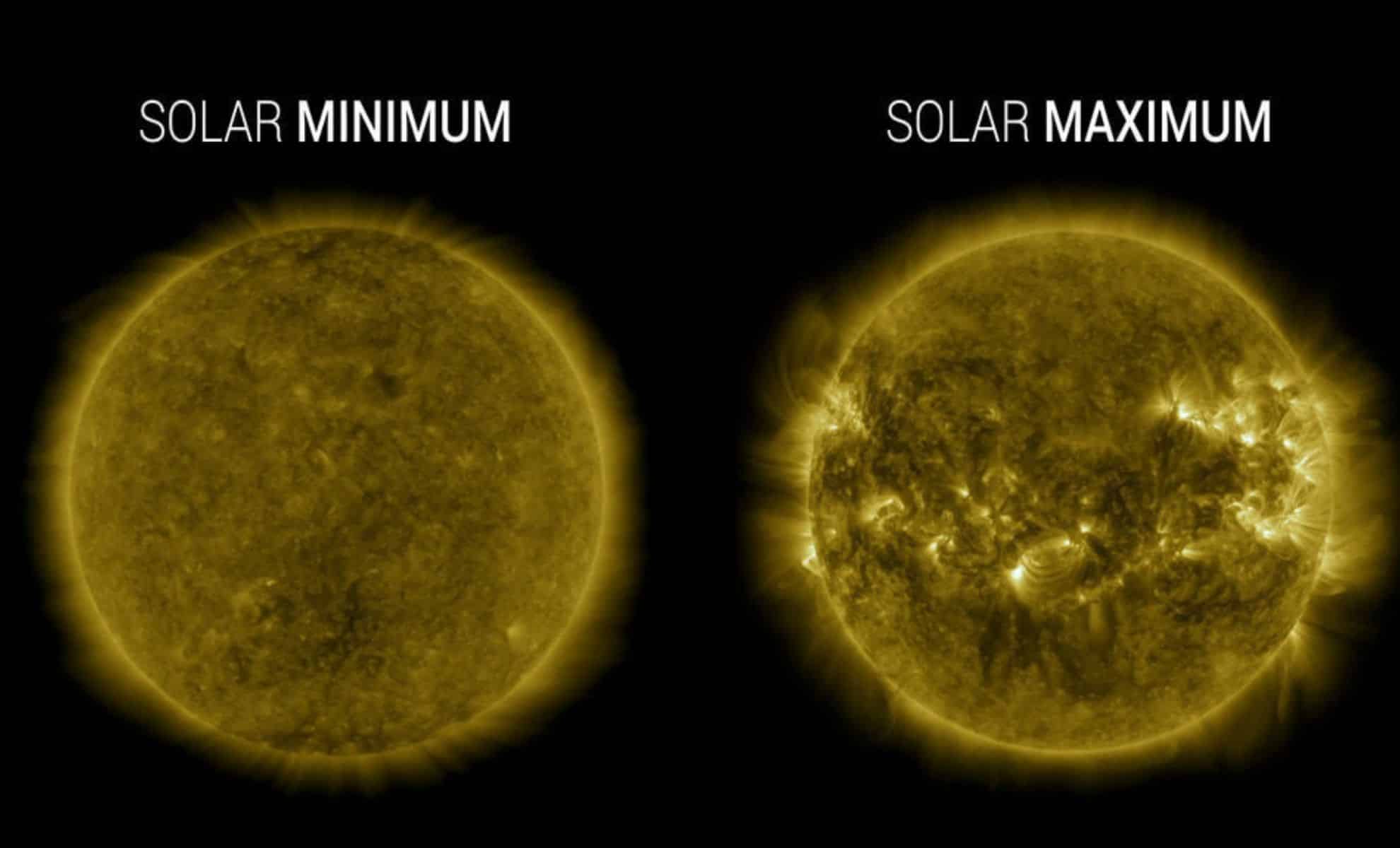NASA has confirmed that the Sun is at solar maximum, the peak of its 11-year cycle. This phase brings more frequent auroras and powerful space weather events, which could last for another year or more. While skywatchers may be treated to stunning displays, NASA and NOAA warn that geomagnetic storms could disrupt satellites, power grids, and communications systems.
NASA Confirms Sun Enters Solar Maximum: Spectacular Auroras and Intensified Space Weather Ahead

The Sun has reached the peak of its 11-year solar cycle, known as solar maximum, a phase that brings with it heightened solar activity, including powerful geomagnetic storms and increased aurora visibility.
According to experts from NASA and NOAA, this period could last another year or more, with frequent space weather events impacting Earth and its space infrastructure.
What Happens During Solar Maximum?
Every 11 years, the Sun transitions between periods of low and high magnetic activity, known as solar minimum and solar maximum respectively. During solar maximum, the Sun's magnetic poles reverse, triggering an uptick in solar phenomena such as sunspots, solar flares, and coronal mass ejections (CMEs). These magnetic storms can send bursts of solar radiation and charged particles across the solar system, some of which collide with Earth’s magnetic field, causing geomagnetic storms.
As solar activity increases, sunspots, which are cooler, magnetically active regions on the Sun’s surface, become more frequent and intense. According to Lisa Upton, co-chair of the Solar Cycle 25 Prediction Panel, “We expect to be in that maximum phase for at least the next six months to a year — maybe even a little bit longer.” This prolonged period of heightened solar activity means more opportunities for scientists to study the Sun’s behavior, and for skywatchers, it offers the promise of frequent and vivid auroras.
The Impact of Geomagnetic Storms
The most visually striking effect of solar maximum is the increased frequency of Northern and Southern Lights—or auroras—caused by solar particles interacting with Earth’s magnetic field. The spectacular light displays are set to spike during solar maximum, with events like the G5 geomagnetic storm in May 2024, one of the most powerful in recent decades, likely to be repeated.
These geomagnetic storms, while awe-inspiring, can also disrupt technology. Solar flares and CMEs can interfere with satellites, power grids, and communications systems, especially as the intensity of solar maximum increases. Jamie Favors, Director of NASA’s Space Weather Program, highlighted the significance of this period: “This increase in activity provides an exciting opportunity to learn about our closest star — but also causes real effects at Earth and throughout our solar system.”
One of the most intense solar events so far in Solar Cycle 25 was an X9 solar flare in October 2024, the largest flare of the cycle to date. These intense bursts of radiation can cause temporary radio blackouts and impact GPS systems.
Solar Cycle 25: What to Expect
Solar Cycle 25, which began in 2019, is predicted to be shorter than usual. The Solar Cycle Prediction Panel has been tracking the Sun’s activity since 1989 and forecasts that solar maximum could peak between now and early 2025. However, predicting the exact peak of solar activity is difficult, as scientists can only identify it after observing a consistent decline in solar activity.
Elsayed Talaat, Director of NOAA's Space Weather Operations, noted, "While the Sun has reached the solar maximum period, the month that solar activity peaks will not be identified for months or years." Despite the uncertainty, solar maximum is likely to continue for another year or so, providing ample opportunities for more significant space weather events.
Even after the Sun begins its transition back to solar minimum, space weather events could remain strong. The declining phase of the solar cycle often produces powerful geomagnetic storms, prolonging the period of increased auroras and solar disturbances.
Preparing for Solar Storms and Space Weather
NASA and NOAA are closely monitoring the Sun’s activity to protect vital infrastructure from the impact of solar storms. Satellites, astronauts aboard the International Space Station, and power grids on Earth are particularly vulnerable during periods of intense solar activity. In preparation for future space weather events, NASA’s Parker Solar Probe mission, set to make its closest-ever approach to the Sun in December 2024, aims to gather crucial data on solar wind and magnetic fields, improving our understanding of space weather at its source.
The mission, along with other upcoming space weather initiatives, will help forecast solar storms and mitigate the risks they pose. As Bill Murtagh, Program Coordinator at NOAA’s Space Weather Prediction Center, explained, “The days beyond this cycle will produce many more geomagnetic storms that will result in aurora being pretty far south.”
With solar activity currently at a 23-year high, we can expect more dazzling auroras and impactful space weather over the next few years, creating both challenges and opportunities for science and society alike.



